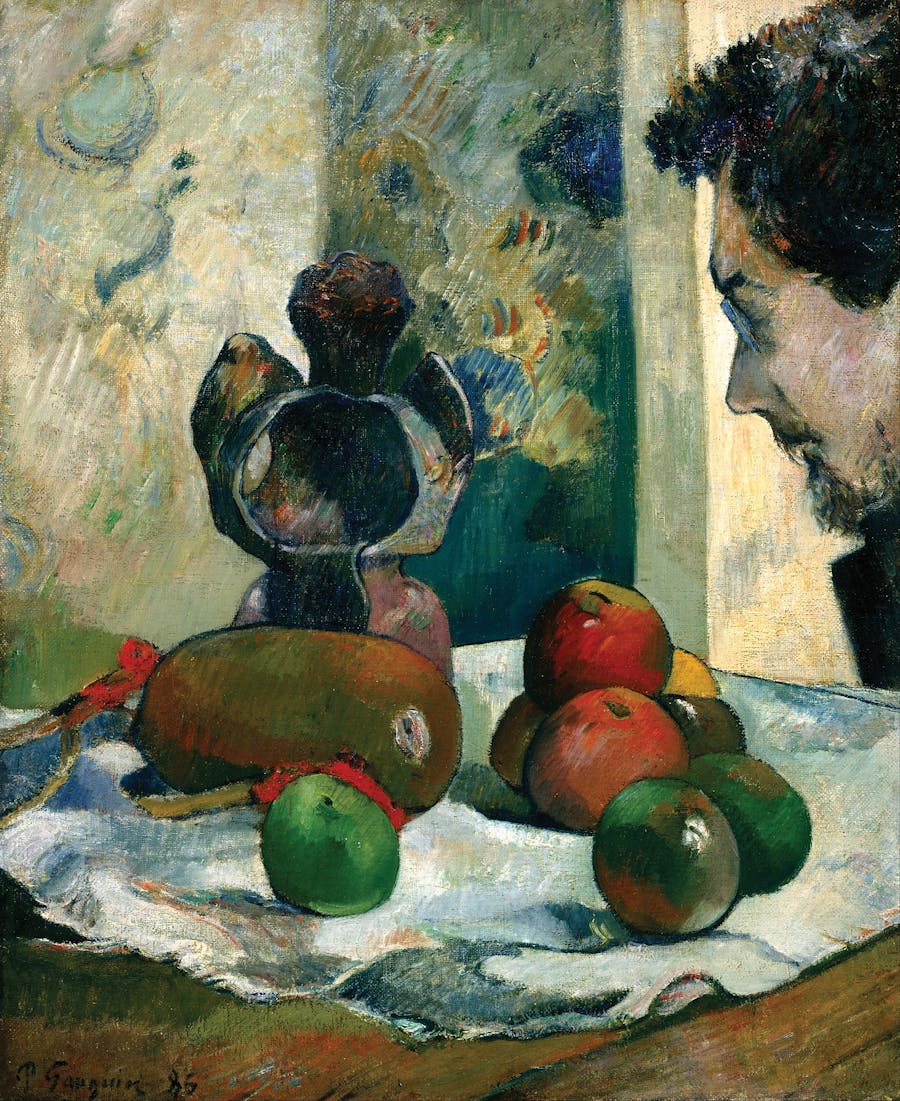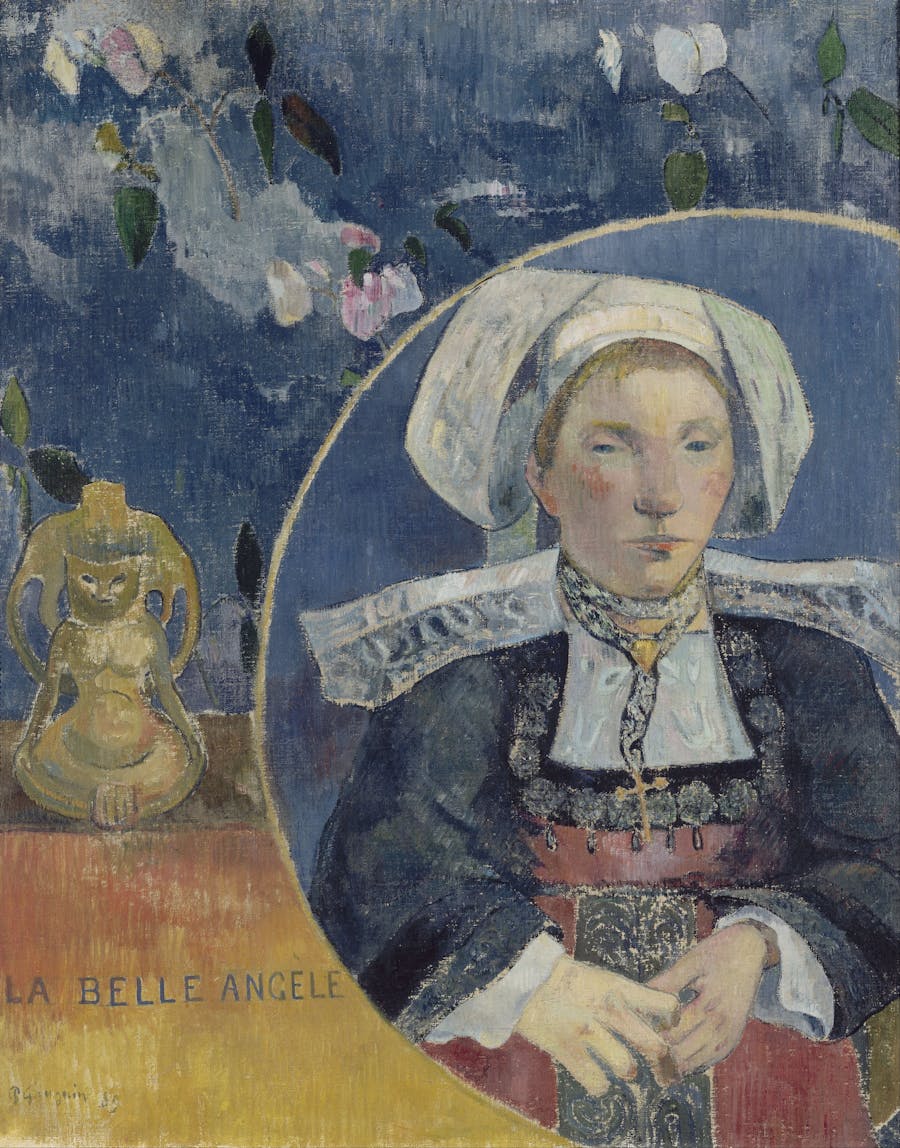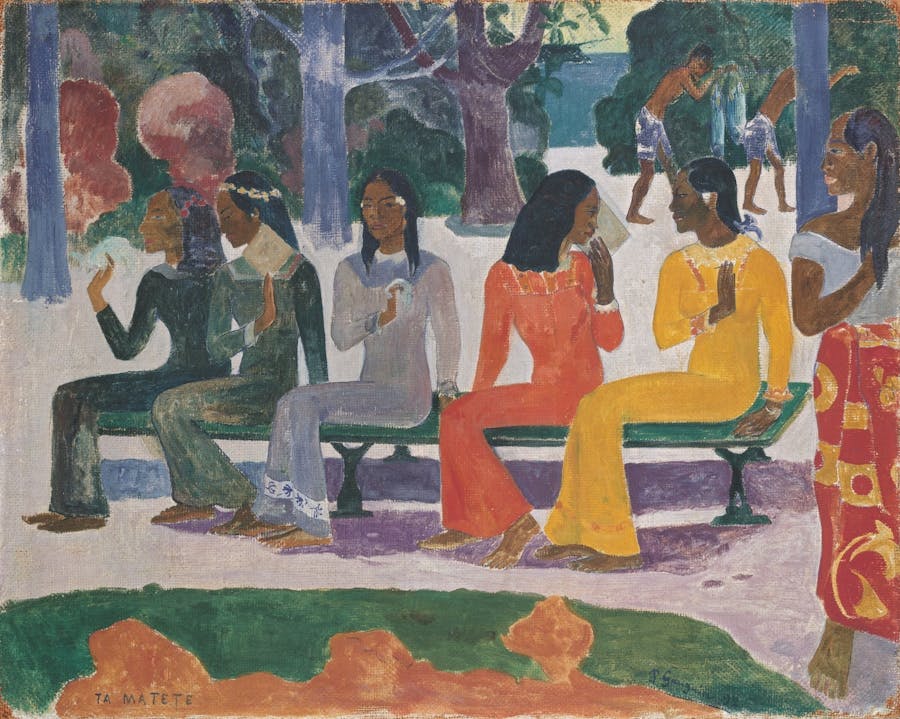Paul Gauguin: The Lost Innocence
A tireless traveler, Gauguin painted Brittany and Polynesia like no other before him. Today, his art is among the most expensive in the world.
Paul Gauguin had already traveled to many places around the world before he reached his mid twenties. Born in Paris in 1848, his father had fled Napoleon III's coup d'état and took him to Peru in 1851, where he spent four years. Back in France, Gauguin joined the merchant navy and then the military. He participated in the war of 1870 and traveled all the way to India, then he returned to Paris and established himself as a stockbroker on the stock exchange.
Gauguin was quickly enriched, leading a perfect life as a Parisian bourgeois and collecting the Impressionists. He started drawing as a dilettante and frequented Camille Pissarro. His first paintings were a touch banal (Les Maraîchers de Vaugirard, 1879) but they already revealed a curved perspective that soon made his masterpieces famous. He also painted the portrait of his loved ones in the same spirit (Clovis Gauguin asleep, 1884); however, the 1882 stock market crash caused his wealth to deteriorate rapidly and forced him to move to Denmark with his family.

More and more absorbed by painting, Gauguin soon developed a midlife crisis which never left him. At 38, he was living with his wife and five children in Copenhagen. His wife – the sole breadwinner at this time – asked him to leave the family as he was so absorbed in his paintings and not taking care of the family.
See also: Multi-million Gauguin Sculpture Acquired by Getty is a Fake
When Gauguin returned to Paris he suddenly found himself without an income, and so he sold his collection to survive. On the advice of a friend, he left Paris to settle in Brittany, in Pont-Aven, “A cheap hole”, as he himself said, and where many artists already lived. Gauguin marveled at the light and landscapes of the seaside, from which yellow, vermilion and sparkling blue sprung. His paintings then were rough, in the same way.

Observing Émile Bernard painting Bretonnes in the Green Meadow (1888) came to him as a revelation. Gauguin immediately painted Vision after the Sermon (1888) and represented the life of the local population in many paintings (Breton Dancing, 1888). The Breton journey was interspersed with trips in Martinique or Arles, where he lived in stormy conditions with none other than Vincent van Gogh. Gauguin left van Gogh the morning after he cut his ear off and, though they never saw each other again, they kept in contact.
Gauguin’s assertive style has been criticized by many. To paint La Belle Angèle (1889), Gauguin took a young girl from Pont-Aven as a model. The colorful portrait, between Japonisme and country, provoked the mockery of the villagers, though some approved, such as the Nabis (which included Paul Sérusier and Maurice Denis).
See also: Henri Matisse: Master of Fauvism and Simplification

In 1890, Gauguin came face-to-face with a rustic Christ in the chapel of Trémalo. He immortalized it in his Self-Portrait to the Yellow Christ (1890), with its triple primitive face. In 1891, he made his first trip to Polynesia. Yielding to the myth of Rousseau, he hoped to find the first condition of man, far from civilization as he once wrote that “Civilization is what makes you sick.”
See also: Pierre Bonnard: Carefree Color
How far would the artist push his quest for purity? Under their idyllic appearance, his large paradisiac canvases hide a raw reality. In Tahiti, Gauguin found his muse in Teha’amana, just 13 years old. The painter, then 43, had talent but was not bothered by pedophile considerations. Around him, Gauguin developed a harem of teenage girls whom he soon adorned with the finery of prostitution. Within his paintings, however, he represented a tenderness for the children, such as Manao Tupapau, 1892.

Gauguin thus recomposed an original Eden far removed from the reality of colonization. He built sheds, engraved wooden bas-reliefs, and reconnected with the ‘wild life’ he described in a newspaper, Noa Noa. To him, it didn’t matter if everything was simply a fantasy.

In 1893, the painter returned to Paris. He organized an exhibition at Durand-Ruel, but his success remained mixed. Even for a few hundred francs, his paintings remained unsold. He ended up selling them off to go back to the islands. Back in the Marquesas, he resumed his habits and moved into the Maison du Jouir. In 1897, he created one of his greatest masterpieces, Where do we come from? What are we? What are we? Where are we going? Where are we going? After being sick and suffering from an unhealed injury, Gauguin died penniless in Atuona in 1903, aged 54.

If the painter did not succeed during his lifetime, the merchants who bought his paintings certainly knew how to take advantage of his talent. At Sotheby's in 2007, Te Poipoi (Le Matin) sold for $39.2 million, and in 2015, When will you marry? (1892) was acquired by Qatar Museums for $300 million in a private sale. Thus, history is made: a work that at one point no one once wanted, is now one of the most expensive paintings in the world.


